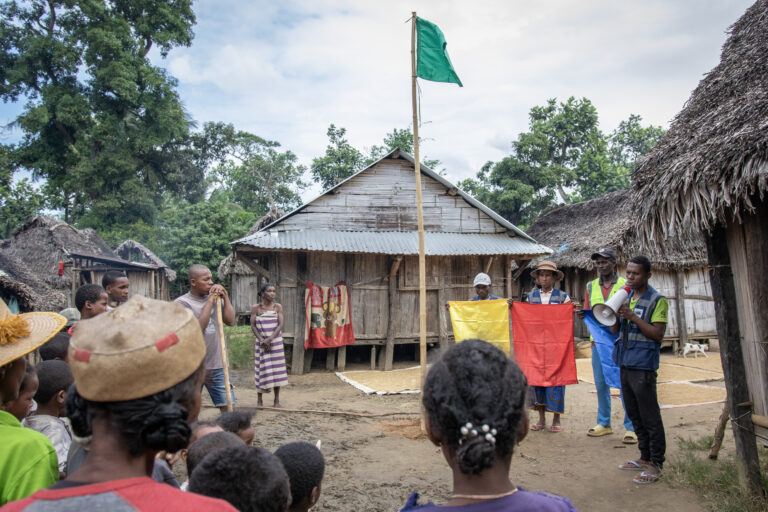Weathering the Storm
Disaster-prone community learns to mitigate the impact of cyclones
Eliace remembers the helplessness he felt during each cyclone season: the knowledge that a storm would inevitably strike Karimbelo, his coastal community, but never knowing when it would make landfall or how much chaos it would leave in its wake.
“In the past, the only awareness of a cyclone was through the radio,” he said. “When I would hear about it, I was afraid. I would think, what is going to happen? I didn’t know what to do, I felt paralyzed. All I could do was wait and see. I didn’t know how to prepare, or how to endure the many damages to the house and the livestock.”
Every year was the same: hope to survive and pray it doesn’t get worse. Managing a cyclone seemed impossible, like trying to harness the wind. Eliace was resigned to the fate of living so close to the ocean.
When FIOVANA came to his village, he was amazed to learn the extent to which a community can endure, and even mitigate, the violent inevitability of a cyclone. As the head of the village and the elected leader of the newly formed Disaster Risk Management Committee (DRMC), he was eager to absorb everything he could about mobilizing a community in a time of crisis.
Before, villagers stayed in their homes during the storm and ensuing floods. The outcome of residing among standing water was the proliferation of diseases. As a result of their training, they now evacuate to higher ground where they shelter in the school. While they wait for the water to recede, designated members of the community organize food and water, as others assess the damage and plan for repairs.

Additionally, FIOVANA supplied flags to indicate the four different stages of cyclone preparedness, which are raised on a pole in the center of town for all to see. The green flag indicates a cyclone is at sea and will likely make landfall in a few days. Yellow indicates the storm is imminent; all fishing should cease, and households should head to the evacuation site. Red indicates the storm has made landfall. Blue indicates the storm has passed, but flood risk is still high. When the water has receded, the flags are removed and the village begins the work of recovery: shoring up damaged houses, clearing trees, and repairing roads.
Beginning in October, a few months before the start of cyclone season, Eliace makes the rounds in his community to inspect home preparations, remind the community of the proper procedures, and generally be a resource to those with questions, doubts, or fears. As a result, he has seen a dramatic reduction in damage and disease in the wake of a cyclone.
“Before, the impacts were tremendous on the households and the families,”
he said. “I thought there was nothing you can do but wait for it and deal with the damages. It was very important for me to learn that there are actions you can take to reduce the impact. It makes me feel empowered, and also challenged, to continue to find ways to protect the community. If I don’t take responsibility, the community will suffer, and I will feel I failed them.”
Eliace continues to work with his DRMC committee to find ways to mitigate cyclones, which includes conducting trainings, workshops, and annual cyclone simulations. He is proud of his work and plans to continue indefinitely.
“It is a very important responsibility because it is lifesaving,” he said. “Working together makes the work easier and more wide reaching. We can manage any disaster now.”
FIOVANA has established and technically supported 475 DRMC committees at the village level and 60 DRMC committees at the county level.

